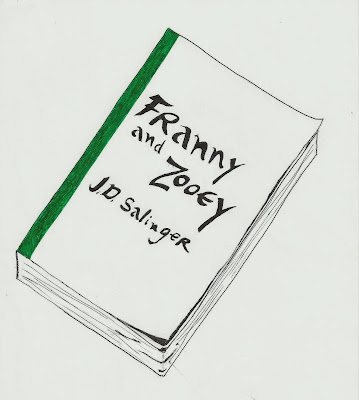.JPG) |
| Habibi: friend or darling Drawing by Stephanie Smelyansky, logos pictured from left to right are Gucci and Armani Exchange |
Nukes. Burqas. Terrorists. Blatant sexism.
That’s how the typical image of the Middle East is painted on Western media. Under such conditions, you would bet that it’s impossible to grow up as a normal teen, no? I mean, when you’re surrounded by violence, poverty, and oppression, you’re bound to grow up just like everyone else, broken and bitter at the world.
That’s how the typical image of the Middle East is painted on Western media. Under such conditions, you would bet that it’s impossible to grow up as a normal teen, no? I mean, when you’re surrounded by violence, poverty, and oppression, you’re bound to grow up just like everyone else, broken and bitter at the world.
Haha. No.
Believe it or not, growing up under Sharia law doesn’t remove your childhood or humanity. Not to even mention that Islamic law isn’t the ruling code of law in many Middle Eastern countries such as Egypt, Turkey, and Jordan. The Middle East is just as culturally diverse as any other region of the world, with religious and cultural practices ranging from state to state. And while some countries are more restrictive than others, that doesn’t stop the youth from thriving.
Take for example the Islamic Republic of Iran. For much of its history, Iran was a modern, Westernized country. Then, in 1979, the country was rocked by a revolution against the American-supported Shah. The religious factions took control of the government at the end of the revolution, imposing Islamic law on the nation and violently purging it of anything deemed as being Western. Men were no longer allowed to touch women who weren’t there wives, sisters or mothers, and women were required to wear the Chador in public. Liquor was banned, Western television renounced, and universities closed. To the West, the Islamic revolution was an abomination.
Fast forward thirty-five years, and we’ve got The Rich Kids of Tehran, and Instagram page depicting the decadent, Western, nay I say normal life of Iranian (or Persian) teens. These teens are pictured wearing bikinis at pool parties, driving sports cars, and celebrating their lives. That’s not to say their lives are as easy as our’s are. One post reported that the page would briefly go offline regarding an incident with the police. In Iran, arrests and enforcement of Islamic law is random and strict, and the fun has to occur undercover. But where there’s teens, there’ll be fun times, regardless of the circumstances. Afterall, no one wants to waste their youth.
On the Mediterranean Sea, the younguns are having just as much fun in Lebanon. Lebanon adheres to civil law based on the French system, but religious law, respective of each religious community as Lebanon recognizes seventeen different religions, dictates personal matters such as marriage and divorce. The government has been accused of censorship and undue violence against citizens. Additionally, the uber Islamic conservative Hezbollah party, an organization that is recognized by the US as terrorist, holds seats in Lebanon’s government, often codifying oppressive and reactionary ideals. But that doesn’t stop Beirut from partying on.
Beirut is the rise of a new scene in alt rock and EDM music. DJs from all over the Middle East travel to Beirut to show off their skills to crowds of raging teens. Many of the prominent dance clubs run a lot like 1920s speak easies, relying on secret passwords and changing locations. Websites like Lebanese Underground help organize and run these ragers. The Beirut music scene has attracted teens and twenty somethings from the West, even drawing the illustrious Nylon magazine in for a spin.
Why does it matter what teens are doing halfway around the world? Because it’s important to delineate the terrorists, dictators, and zealots we see in the media from the people that live under their rule. Our parents’ generation has made a lot of talk about peace in the Middle East but very little action. If we truly want to achieve world peace, our generation, the youth of today, will have to start it. And we can’t make peace if we view the people we’re doing it with under a turban-and-bomb clad stereotype that neglects their humanity.


.JPG)

.JPG)
.JPG)


.JPG)
.JPG)
